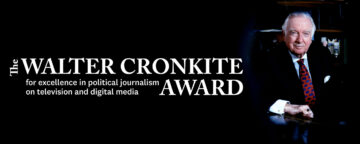Neuroscientists have shown that looking at how people’s brains respond to persuasive messages in TV advertisements or newspaper articles can help reveal how these messages change minds or behavior. A new study aimed to determine if the same brain processes can be linked to message effectiveness across diverse formats, such as YouTube videos, health campaigns, and newspaper articles.
In a new study published in PNAS Nexus, researchers pooled data from over 500 individual participants across 16 functional MRI studies that investigated brain responses to and the effectiveness of persuasive messages across various contexts, including public health campaigns, crowdfunding sites, movie trailers, and YouTube videos. They found that, on average across these diverse contexts, activity in brain regions linked to reward and social processing can predict how effective messages will be.

To make this work possible, Emily B. Falk, director of the Communication Neuroscience Lab at the Annenberg School for Communication and Director of the Annenberg Public Policy Center’s Climate Communication Division, Christin Scholz (Ph.D. ‘18), Assistant Professor in Persuasive Communication at the University of Amsterdam, and Hang-Yee Chan, lecturer at King’s College London and former Communication Neuroscience Lab postdoctoral fellow brought together and led an international team of interdisciplinary scholars who contributed their data and expertise.
“Existing theories had suggested that decision-making is driven by brain activity in predictable brain systems,” Falk, Professor of Communication, Psychology, Marketing, Operations, Informatics, and Decisions, says. “One associated with personal rewards, and the other related to understanding other people’s thoughts and feelings — a process known as mentalizing.”
Yet, thus far, these predictions had only been tested independently in individual contexts such as marketing or public health. Identifying commonalities in the processes that are persuasive across these domains could reveal efficient ways in which scholars and practitioners from marketing, health, political, and entertainment communication might collaborate to enhance their messages.
Indeed, across their unique, diverse database, the researchers found that more effective messages activated these brain regions, and that these responses predicted not only which messages were preferred by participants who underwent brain scans, but also which messages were well-received by broader audiences whose brains were not scanned. These effects were small but prevailed, on average, across hundreds of diverse messages and people. That is, enticing message receivers to consider personal rewards and the thoughts and feelings of others might be useful persuasive strategies across a broad range of messages.
When examining brain regions associated with emotion, the researchers were surprised to find that activity in these regions showed associations with message effectiveness at a large scale, but did not predict message effects on the individuals whose brains were scanned.
“These findings are in line with the idea that lower-level responses to messages, especially on an emotional or interpersonal level, may be more universal and thus more generalizable from individual brains to larger groups across message domains,” Scholz says.
The study’s results provide insights into how communicators can craft more impactful messages and highlight opportunities for researchers to work together across disciplines to understand and target common mechanisms that make messages more effective, the researchers say.
“Designing interventions that engage the reward system and mentalizing in the brain may lead to more effective message generation and dissemination,” Chan says.
“Brain activity explains message effectiveness: A mega-analysis of 16 neuroimaging studies” was published in PNAS Nexus and authored by Christin Scholz, Hang-Yee Chan, Jeesung Ahn, Maarten A. S. Boksem, Nicole Cooper, Jason C. Coronel, Bruce P. Doré, Alexander Genevsky, Richard Huskey, Yoona Kang, Brian Knutson, Matthew D. Lieberman, Matthew Brook O’Donnell, Anthony Resnick, Ale Smidts, Vinod Venkatraman, Khoi Vo, René Weber, Carolyn Yoon, and Emily B. Falk.
See the Annenberg School for Communication, where this news release originally appeared, to read the full version.


